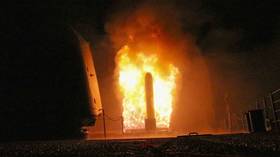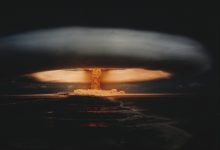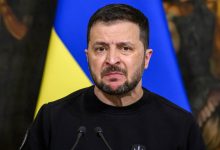
The NATO Parliamentary Assembly must know its call to supply Kiev with medium-range missiles would provoke a direct war with Russia
By Ilya Kramnik, military analyst, expert at the Russian International Affairs Council and researcher at the Institute of World Economy and International Relations

FILE PHOTO. The guided-missile cruiser USS Monterey (CG 61) fires a Tomahawk land attack missile. © US Navy /Getty Images
The NATO Parliamentary Assembly’s resolution on Wednesday calling for Ukraine to be supplied with medium-range missiles — defined by the now-defunct INF Treaty as those with ranges between 1,000 and 5,500 kilometers — is a significant development, though not a final decision by the bloc or any national government.
If such a decision is made, the options for providing these missiles to Ukraine remain limited. The only readily available medium-range missile system in the West is the US-made Tomahawk, a weapon that has already been used in various global conflicts.
Currently, the only ground-based launcher systems capable of firing these missiles are the Mk 70 and the MRC Typhon, both based on the Mk 41 shipborne launching system, with only minor operational differences between them.
But will these systems be transferred to Ukraine? The likely goal of America’s Biden administration needs careful consideration. The aim cannot be to decisively end the war in Ukraine, as the existing stock of Tomahawks is insufficient to achieve that objective.

Read more
Even with a few dozen Tomahawks potentially being transferred to Kiev, such an action would lead to a significant escalation, likely provoking a strong response from Russia — possibly bringing the US and NATO into direct confrontation with Moscow, especially given the inevitable involvement of US military personnel in deploying these weapons.
Some experts speculate that this move is part of a larger strategy by the Biden administration to “complicate matters as much as possible” in an effort to make any future peace talks — particularly those under a potential Trump administration — more difficult to pursue.
As an alternative, Washington could consider providing JASSM-ER air-launched missiles, which have a range of about 1,000 kilometers and can be deployed from F-16 fighter jets. However, this too would do little to shift the balance of the conflict. The number of available JASSM-ERs would be far too small to lead to a Ukrainian victory, and their use would again risk escalating the conflict, with unpredictable consequences. Moreover, such a transfer would be impossible without continued US technical support.
Do NATO’s leaders understand the risks of such actions? Surely they must. So why push for such a resolution? The NATO Parliamentary Assembly, though influential, is one of the least powerful branches of the alliance. Nonetheless, its actions appear to follow the larger direction set by NATO’s leadership, often without the full weight of strategic consequences being considered.




